Mechanistic links between Na+ channel (SCN5A) mutations and impaired cardiac pacemaking in sick sinus syndrome
- PMID: 20448214
- PMCID: PMC2901593
- DOI: 10.1161/CIRCRESAHA.110.219949
Mechanistic links between Na+ channel (SCN5A) mutations and impaired cardiac pacemaking in sick sinus syndrome
Abstract
Rationale: Familial sick sinus syndrome (SSS) has been linked to loss-of-function mutations of the SCN5A gene, which result in decreased inward Na(+) current, I(Na). However, the functional role of I(Na) in cardiac pacemaking is controversial, and mechanistic links between mutations and sinus node dysfunction in SSS are unclear.
Objective: To determine mechanisms by which the SCN5A mutations impair cardiac pacemaking.
Methods and results: Action potential (AP) models for rabbit sinoatrial node (SAN) cells were modified to incorporate experimentally reported I(Na) changes induced by 2 groups of SCN5A gene mutations (affecting the activation and inactivation of I(Na), respectively). The cell models were incorporated into an anatomically detailed 2D model of the intact SAN-atrium. Effects of the mutations and vagal nerve activity on cardiac pacemaking at the single-cell and tissue levels were studied. Multielectrode extracellular potential recordings of activation pattern from intact SAN-atrium preparations were performed to test predictions of the models. At the single-cell level, the mutations slowed down pacemaking rates in peripheral, but not in central SAN cells that control the heart rhythm. However, in tissue simulations, the mutations not only slowed down pacemaking, but also compromised AP conduction across the SAN-atrium, leading to a possible SAN exit block or sinus arrest, the major features of SSS. Simulated vagal nerve activity amplified the bradycardiac effects of the mutations. Two groups of SCN5A mutations showed subtle differences in impairing the ability of the SAN to drive the surrounding atrium, primarily attributable to their differential effects on atrial excitability and conduction safety. Experimental data with tetrodotoxin and carbachol confirmed the simulation outcomes.
Conclusions: Our study substantiates the causative link between SCN5A gene mutations and SSS and illustrates mechanisms by which the mutations impair the driving ability of the SAN.
Figures
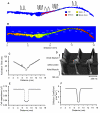
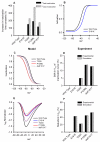
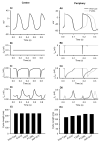
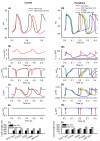
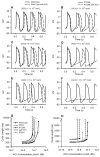
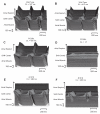







References
-
- Adan V, Crown LA. Diagnosis and treatment of sick sinus syndrome. Am Fam Physician. 2003;67:1725–1732. - PubMed
-
- Dobrzynski H, Boyett MR, Anderson RH. New insights into pacemaker activity: Promoting understanding of sick sinus syndrome. Circulation. 2007;115:1921–1932. - PubMed
-
- Alboni P, Gianfranchi L, Brignole M. Treatment of persistent sinus bradycardia with intermittent symptoms: are guidelines clear? Europace. 2009 (doi:10.1093/europace/eup014) - PubMed
Publication types
MeSH terms
Substances
Grants and funding
LinkOut - more resources
Full Text Sources
Medical
Miscellaneous

